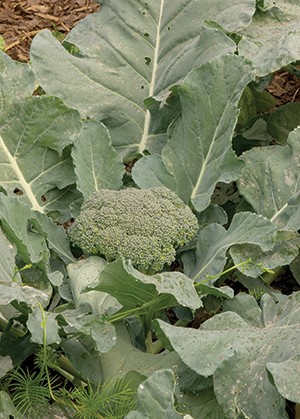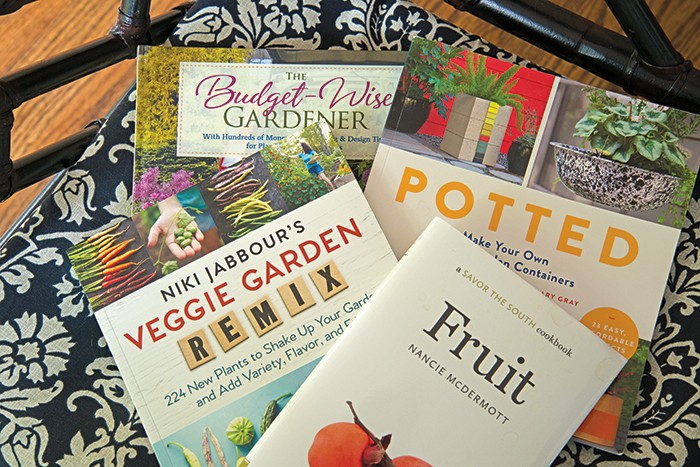With the summer sizzle in full swing, it’s hard to work outside in the garden all day, but this doesn’t mean you can’t have a mental garden workout inside. While weathering the heat in the cool confines of your comfy home this month, I invite you to dig into some of these books that have recently landed on my desk.
“Potted” by Annette Goliti Gutierrez and Mary Gray (Timber Press, $19.95 paperback). Plants are the center of the imaginative process known as container gardening, but this book adds a new layer of creativity by offering 23 inventive planter designs for do-it-yourselfers. Concrete blocks, roof vents, PVC pipe, driftwood, chimney flue liners, attic gables, terra-cotta pots, cattle troughs — these are some of the everyday items Gutierrez and Gray artistically convert to container canvases. Just as a simple seed can grow to be a pretty plant, this well-illustrated book shows, with the right mix of fun and outside-the-box thinking, even ordinary objects can become exceptional pots.
“The Budget-Wise Gardener” by Kerry Ann Mendez (St. Lynn’s Press, $19.95 hardback). This a good companion to “Potted” because it extends the idea of doing more for less money in the garden. One of its chapters, “Regal Containers on a Dollar-Store Budget,” is complemented nicely with a large section that includes a ton of nifty tips on how to get the best bang out of your bucks when it comes to buying plants. “Design Secrets that Save Money and Time” is another interesting chapter that will appeal to any frugal gardener.
“Veggie Garden Remix” by Niki Jabbour (Storey Publishing, $19.95 paperback). Actually, this book should be titled “Veggie Garden Re-think,” because it introduces backyard growers to 224 alternative vegetables that can add more edible pizzazz to planting rows. And I like its setup — chapters start with a similar question, with an example being “Like Spinach?” which is followed by several spinach-like substitutes to try instead, such as orach, New Zealand spinach, green amaranth, magenta spreen and sweet potato leaf, each enhanced with descriptions and planting tips. For even more options, many unusual varieties of common veggies are included throughout the book.
“Fruit” by Nancie McDermott (UNC Press, $20 hardback). In cultivated gardens and the backwoods of the Southeast, edible fruits abound, and this book is a celebration of these delectables. Part of UNC Press’ “Savor the South” series, “Fruit” serves up a generous helping of tempting recipes for such backyard-grown goodies as peaches, watermelon, figs, strawberries and cantaloupes, as well as wild-picked pleasures that include blackberries, persimmons, paw paws and muscadine grapes.

Broccoli
Even with the passing of midsummer, there is still plenty of potential left in the veggie patch. In particular, cool-season vegetables such as beets, broccoli, cabbage, carrots, cauliflower, collards, kale, lettuce, mustard, radishes, spinach and turnips can all be planted this month.
If possible, tuck transplants into the garden soil on a cloudy day and use scrap lumber or stiff pieces of cardboard to provide a bit of shade during the worst of the afternoon heat for at least the first week. And if you are directly planting seeds, follow rule No.1: Don’t let their growing beds dry out.
To Do in the Garden
August
- Plant for the botanical fires of fall by adding such glorious late-blooming perennials as helianthus, helenium, heliopsis and rudbeckia to the flower border. Pay special attention to the rudbeckia selections at your friendly local garden shop, as many new dazzling cultivars have hit the market recently.
- Fall-blooming bulbs such as autumn crocus, colchicum and sternbergia can be planted as soon as they are available from local garden shops to add even more brilliance to the coming autumn blaze.
- Cuttings of outdoor ornamentals such as coleus, geraniums, impatiens and wax begonias can be easily rooted in pots now and brought indoors in a few months to brighten up the home’s interior during the winter months.
- One of the easiest ways to save culinary herbs is to harvest them fresh, chop finely, put in ice trays, add water and slip the mix into a freezer. Then, when a soup, stew or other dish needs a little extra zip in the taste department, just toss in a few herb cubes during preparation.
- Powdery mildew can be a problem when the days are still warm, but the nights begin to cool. There are, however, cultural practices that can help prevent this disease. Look for mildew-resistant varieties; space plants so air can freely circulate through the foliage and sunlight can be let in; water the root zone and not the leaves; and cut back on nitrogen fertilizer, which could encourage excessive, susceptible, late-season growth.







